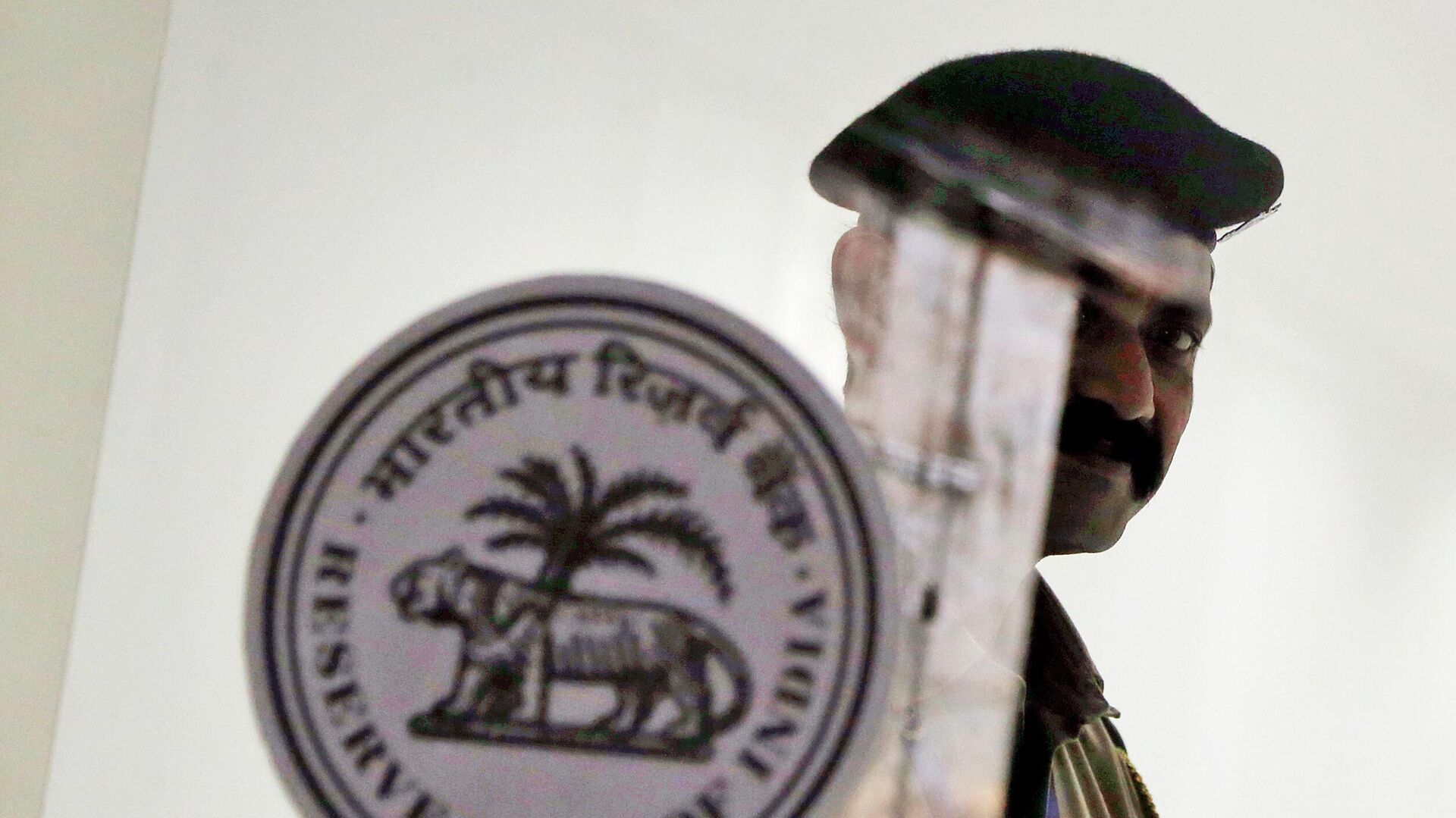https://sputniknews.in/20230106/economic-cooperation-in-south-asia-could-counter-global-headwinds-rbi-402655.html
'Economic Cooperation’ in South Asia Could Counter Global Headwinds: RBI
'Economic Cooperation’ in South Asia Could Counter Global Headwinds: RBI
Sputnik India
India’s central bank governor Shaktikanta Das has said that regional economic cooperation among South Asian economies will help the governments in the region counter global economic headwinds.
2023-01-06T18:40+0530
2023-01-06T18:40+0530
2023-01-06T19:11+0530
world news
south asia
economic crisis
india
sri lanka
nepal
pakistan
maldives
ukraine
https://cdn1.img.sputniknews.in/img/07e6/0c/15/181356_0:68:2511:1480_1920x0_80_0_0_179a287339e9ab4fca665d36219a90da.jpg
India’s Central Bank Governor Shaktikanta Das has said that regional economic cooperation among South Asian economies will help the governments in the region counter global economic headwinds.The Central Bank chief noted that in spite of the global headwinds, India, Bangladesh, and the Maldives are projected to be the fastest-growing economies globally this year.Das said that New Delhi had also started to “move forward” on a proposal to introduce the Central Banking Digital Currency (CBDC). He said the measure would also help enhance “cooperation” among the regional economies.Citing World Bank estimates, the Central Bank chief noted that trade among South Asian countries was just a fifth of its overall potential at present, resulting in an annual average shortfall of $44 billion.According to Das, a “common electricity market” in South Asia is needed in order to achieve economic integration, which he said would save governments around $17 billion annually. India and Bangladesh have already decided to link their national electricity grids, he added. Further, Das said that enhanced investments in transport and logistics would reduce the costs of cross-border trade in the region.Key Policy Priorities for South Asian CountriesDas spelled out six key policy priorities for South Asian governments – taming inflation, managing external debt vulnerabilities, raising economic productivity, strengthening intra-region energy cooperation, green energy transition, and promotion of tourism.Das noted that food inflation in the first three quarters of 2022 in the South Asian region averaged around 20 percent.With regards to rising external debt in the region, Das underscored that foreign debt of low and middle-income nations surged by $1.1 trillion between 2019 and 2021. He noted that several South Asian countries, which include Sri Lanka and Pakistan, have been reeling from the impacts of high debt burdens.Further, Das said that enhancing energy cooperation among the nations would help them counter global volatility in energy prices caused by external factors.The RBI governor noted that the South Asian region was one of the most “vulnerable” across the world to climate change. “The South Asian region must strengthen cooperation to make green transition of the region faster and at reasonable cost,” Das concluded.
south asia
india
sri lanka
nepal
pakistan
maldives
ukraine
Sputnik India
feedback.hindi@sputniknews.com
+74956456601
MIA „Rossiya Segodnya“
2023
Dhairya Maheshwari
https://cdn1.img.sputniknews.in/img/07e6/0c/13/138962_0:0:641:640_100x100_80_0_0_2cb44360dbcdf6d84bf4b299cd045917.jpg
Dhairya Maheshwari
https://cdn1.img.sputniknews.in/img/07e6/0c/13/138962_0:0:641:640_100x100_80_0_0_2cb44360dbcdf6d84bf4b299cd045917.jpg
News
en_IN
Sputnik India
feedback.hindi@sputniknews.com
+74956456601
MIA „Rossiya Segodnya“
Sputnik India
feedback.hindi@sputniknews.com
+74956456601
MIA „Rossiya Segodnya“
Dhairya Maheshwari
https://cdn1.img.sputniknews.in/img/07e6/0c/13/138962_0:0:641:640_100x100_80_0_0_2cb44360dbcdf6d84bf4b299cd045917.jpg
global gdp growth, global gdp 2022, rupee trade, rupee trading settlement, rupee trade mechanism, inflation rate in india, inflation in india, sri lanka news, sri lanka crisis, pakistan economy, pakistan floods,
global gdp growth, global gdp 2022, rupee trade, rupee trading settlement, rupee trade mechanism, inflation rate in india, inflation in india, sri lanka news, sri lanka crisis, pakistan economy, pakistan floods,
'Economic Cooperation’ in South Asia Could Counter Global Headwinds: RBI
18:40 06.01.2023 (Updated: 19:11 06.01.2023) The International Monetary Fund (IMF) has said that global economic growth in 2023 will slow down to 2.7 percent from 3.2 percent in 2022.
India’s Central Bank Governor Shaktikanta Das has said that regional economic cooperation among South Asian economies will help the governments in the region counter global economic headwinds.
“With the global trade outlook for 2023 overcast, greater intra-regional trade in South Asia can enhance opportunities for growth and employment in the region,” the Reserve Bank of India (RBI) governor said while delivering keynote remarks at a book launch organized by the International Monetary Fund (IMF) in New Delhi.
The Central Bank chief noted that in spite of the global headwinds, India, Bangladesh, and the Maldives are projected to be the fastest-growing economies globally this year.
He said that as a means to achieve greater regional integration and bring down trade costs, the RBI and the Indian government were already in touch with South Asian nations on trading in Indian rupees.
Das said that New Delhi had also started to “move forward” on a proposal to introduce the Central Banking Digital Currency (CBDC).
He said the measure would also help enhance “cooperation” among the regional economies.
Citing World Bank estimates, the Central Bank chief noted that trade among South Asian countries was just a fifth of its overall potential at present, resulting in an annual average shortfall of $44 billion.
According to Das, a “common electricity market” in South Asia is needed in order to achieve economic integration, which he said would save governments around $17 billion annually. India and Bangladesh have already decided to link their national electricity grids, he added.
Further, Das said that enhanced investments in transport and logistics would reduce the costs of cross-border trade in the region.
Key Policy Priorities for South Asian Countries
Das spelled out six key policy priorities for South Asian governments – taming inflation, managing external debt vulnerabilities, raising economic productivity, strengthening intra-region energy cooperation, green energy transition, and promotion of tourism.
He said that COVID-related global supply chain disruptions, food and energy crisis caused by the spillover effects of the Ukraine conflict, and financial market volatility from the aggressive tightening of monetary policy have led to a surge in inflation in the region, like elsewhere in the world.
Das noted that
food inflation in the first three quarters of 2022 in the South Asian region averaged around 20 percent.
With regards to rising external debt in the region, Das underscored that foreign debt of low and middle-income nations surged by $1.1 trillion between 2019 and 2021. He noted that several South Asian countries, which include Sri Lanka and Pakistan, have been reeling from the impacts of high debt burdens.
Further, Das said that enhancing energy cooperation among the nations would help them counter global volatility in energy prices caused by external factors.
“The India-Bangladesh Friendship Pipeline Project (IBFPP) – a 130 km pipeline joining Siliguri in West Bengal and Parbatipur in Bangladesh – would have a capacity to export petroleum products of one million metric tons per annum,” he noted.
The RBI governor noted that the South Asian region was one of the most “vulnerable” across the world to climate change. “The South Asian region must strengthen cooperation to make green transition of the region faster and at reasonable cost,” Das concluded.


